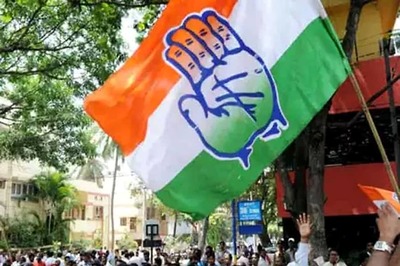Fintech In 2022: A Defining Year For Digital Lenders; Untapped Segments See Growth Potential In 2023

views
The Indian economy has seen a recovery in the year 2022 after a two-year hit by the coronavirus waves in 2020 and 2021. Though startups in the year laid off thousands of employees this year, the year 2022 has been a defining year for the fintech and digital payments industry. Experts said that despite the fears around a funding winter, there is capital for fintech expansion as the market is still untapped. They said certain segments of the market remain underpenetrated with considerable room for growth in 2023.
The Indian financial technology (fintech) market currently stands as the third largest fintech ecosystem in the world and is estimated to reach $1 trillion by 2030. Tier 3-6 cities in the past two years have contributed about 60-70 per cent to new mobile payment customers.
Currently, about 40 per cent of payments by value are digital, contributing to a $3 trillion digital payment market on account of rapid expansion in digital infrastructure, UPI-led migration to digital, pandemic-led acceleration of shift in customer preferences, growing merchant acceptance network and disruptive innovations by fintechs.
Ketan Patel, CEO of Mswipe Technologies, said, “The year 2022 has been a defining year for the fintech and digital payments industry. Furthermore, with the advent of UPI on credit, democratising lending will get easier, and MSMEs can serve as integral mediums for them. Despite the fears around a ‘funding winter’, there is capital for fintech expansion because so much of the market is still untapped — so companies with a solid value proposition will always get money.”
He added that with the Open Network for Digital Commerce (ONDC) gaining momentum, digitisation of small merchants will increase, democratise digital commerce with standardised operations and logistical efficiencies. The ‘Buy Now Pay Later’ trend is expected to grow at 35-40 per cent over the next 5 years led by rapid growth in consumerism and online spending.
Nageen Kommu, CEO of Digitap, said, “The Indian fintech market currently stands as the third-largest fintech ecosystem in the world and is well aligned to reach $1 trillion by 2030. There are some remarkable trends to anticipate for 2023.”
He added that considering the immense potential of fintechs, traditional financial institutions is expected to enter the fintech space via collaborations. This collaborative approach will become prominent in the time to come with profound alliances, distinctive financial products, and motive to offer enhanced banking experiences.
“The regulatory intervention is bound to increase in 2023, ensuring compliant fintech operations and create an enabling business environment to support sustainable growth of the sector. The significance of data analytics in fintech operations is rising rapidly, with alternative data emerging as a powerful tool to enhance credit outreach to underserved and unserved sections. In the year 2023, companies will continue to explore new methods to collect and use data to understand customer dynamic requirements accurately as well as design products,” Nageen said.
Mswipe’s Ketan said that despite good growth, certain segments of the market remain underpenetrated with considerable room for growth. The next wave of growth is likely to come from Tier 3-6 locations, as evidenced in the past two years wherein Tier 3-6 cities have contributed to nearly 60-70 per cent of new mobile payment customers.
He added that the UPI system has supercharged India’s transition to non-cash payments, especially in person-to-person (P2P) fund transfers and low-value merchant (P2M) payments.
“Not surprisingly, UPI saw about 9x transaction volume increase in the past three years, increasing from five billion transactions in FY19 to about 46 billion transactions in FY22, accounting for over 60 per cent of non-cash transaction volumes in FY22,” Ketan said.
Recently, the RBI also introduced the rules on digital lending to prevent illegal digital lending activities and amid concerns over business conduct and customer protection.
As per the norms on digital lending, the RBI has prohibited the automatic increase in credit limit without the explicit consent of borrowers. Digital lending entities and not the borrowers should pay fees or charges payable to lending service providers (LSPs) in the credit intermediation process.
Read all the Latest Business News here




















Comments
0 comment